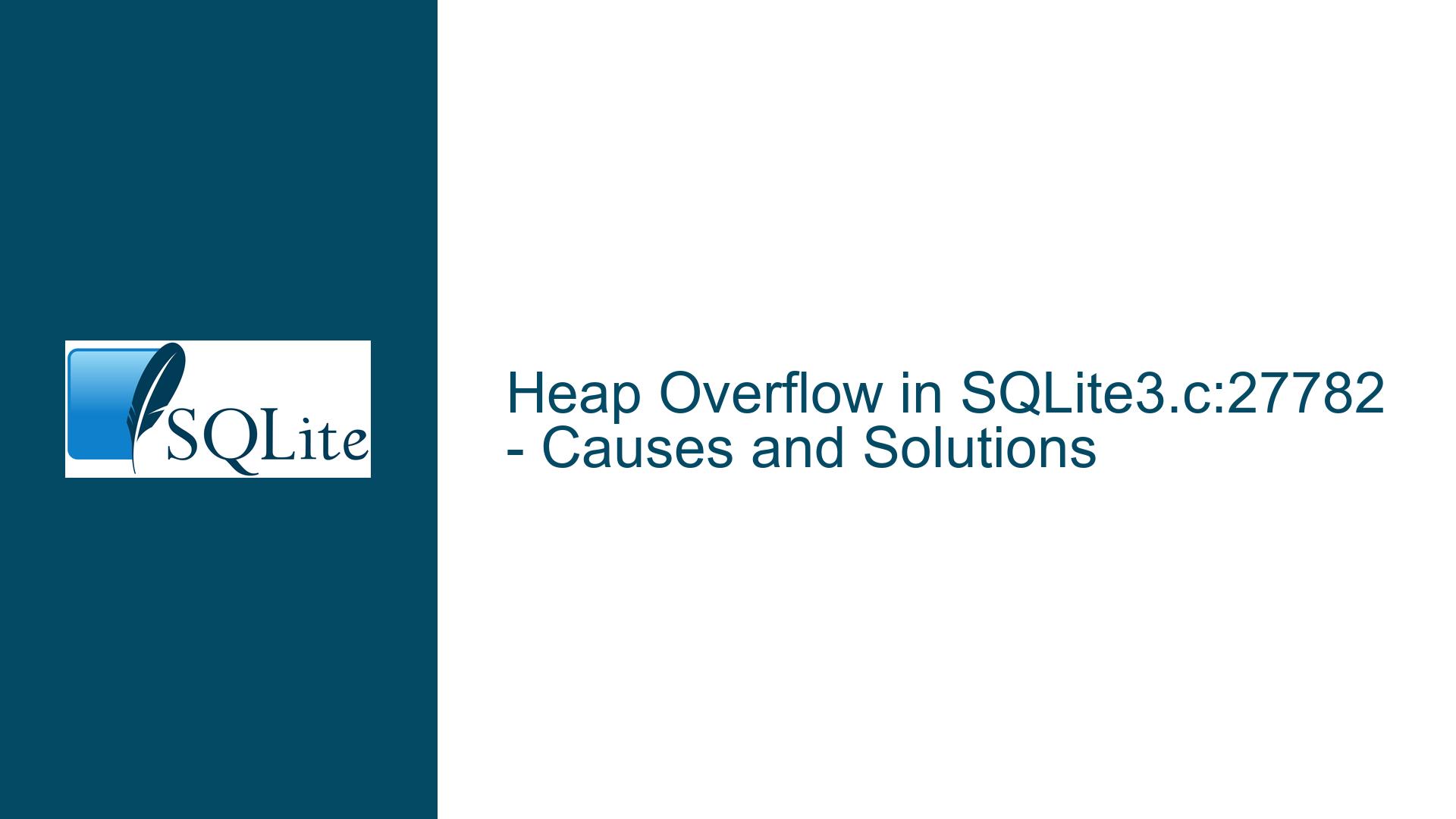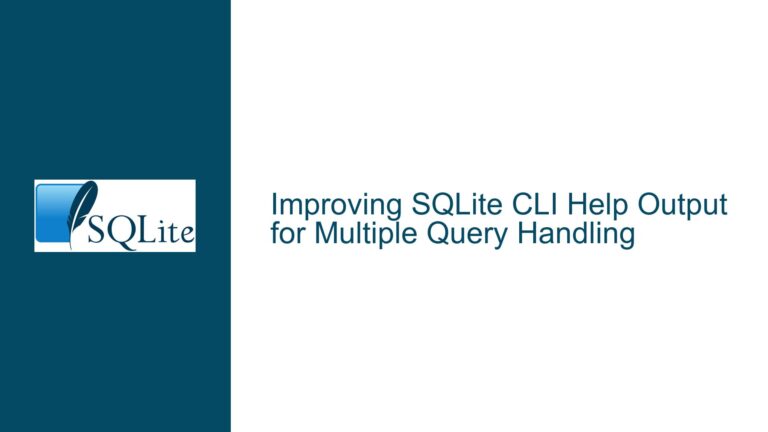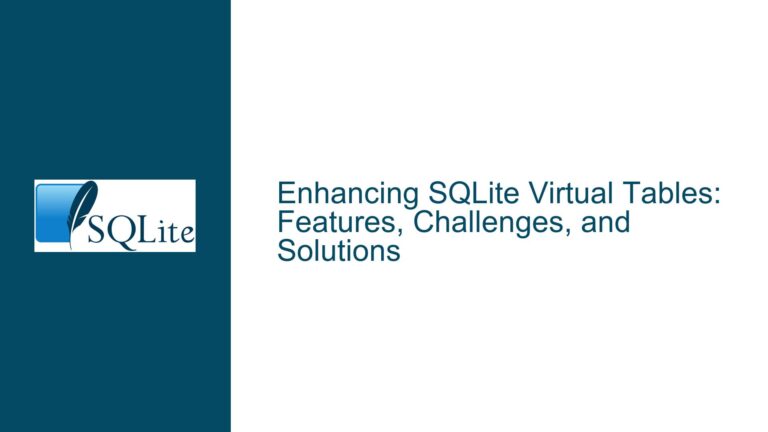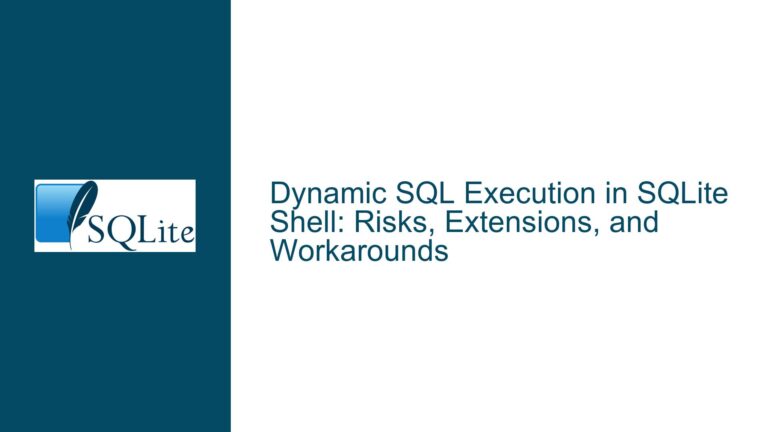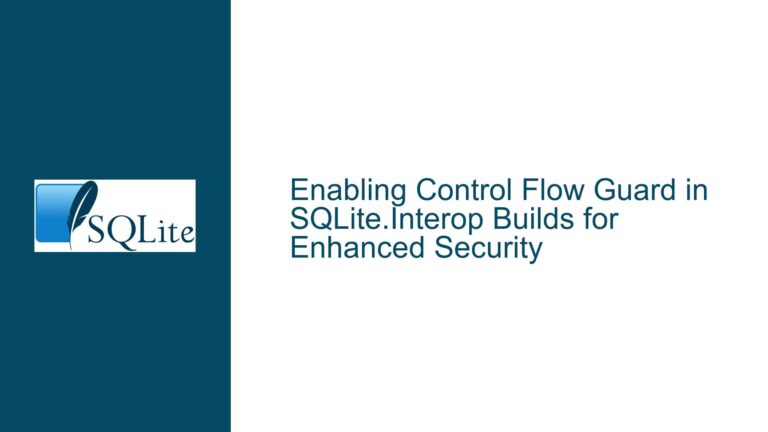Heap Overflow in SQLite3.c:27782 – Causes and Solutions
Heap Overflow in SQLite3.c:27782: Understanding the Issue
A heap overflow is a critical issue that occurs when a program writes more data to a heap-allocated buffer than it can hold, leading to memory corruption. In the context of SQLite, a heap overflow can result in unpredictable behavior, crashes, or even security vulnerabilities. The specific line sqlite3.c:27782 points to a location in the SQLite source code where this overflow has been detected. Understanding the root cause of this issue requires a deep dive into the SQLite3 source code, the conditions under which the overflow occurs, and the implications of such an overflow on the database’s stability and security.
The heap overflow at sqlite3.c:27782 is likely related to memory management within SQLite’s internal functions. SQLite, being a lightweight database engine, manages its own memory allocations and deallocations to optimize performance and resource usage. However, this also means that any bug in the memory management logic can lead to serious issues like heap overflows. The overflow could be triggered by a variety of operations, such as executing a complex query, handling large datasets, or performing certain types of transactions. The exact nature of the overflow depends on the specific code path that leads to the memory corruption.
Heap overflows are particularly dangerous because they can overwrite adjacent memory regions, potentially altering the behavior of the program or exposing sensitive data. In the case of SQLite, a heap overflow could corrupt the database’s internal structures, leading to data loss or corruption. It could also be exploited by malicious actors to execute arbitrary code, compromising the security of the system running the SQLite database. Therefore, addressing this issue is not just a matter of fixing a bug but also ensuring the integrity and security of the database.
Potential Causes of Heap Overflow in SQLite3.c:27782
The heap overflow at sqlite3.c:27782 can be attributed to several potential causes, each of which requires careful analysis to identify and resolve. One of the primary causes could be an incorrect calculation of buffer sizes within the SQLite code. SQLite often allocates memory dynamically based on the size of the data it needs to store or process. If the size calculation is off by even a single byte, it can lead to a buffer overflow when the data is written to the heap. This could happen, for example, if the code assumes a fixed size for certain data structures but encounters a larger-than-expected input.
Another possible cause is the mishandling of user-supplied input. SQLite is designed to handle a wide range of data types and sizes, but if the input is not properly validated or sanitized, it could lead to unexpected behavior. For instance, if a query contains a string that is longer than the allocated buffer, it could result in a heap overflow when the string is copied into memory. This is especially problematic in SQLite, where user input can come from various sources, including SQL queries, database files, and even external APIs.
A third potential cause is the improper use of SQLite’s internal APIs. SQLite provides a set of functions for managing memory, such as sqlite3_malloc() and sqlite3_free(). If these functions are used incorrectly—for example, if memory is allocated but not freed, or if the wrong size is passed to sqlite3_malloc()—it could lead to memory corruption. Additionally, if the code assumes that a certain memory region is larger than it actually is, it could result in a heap overflow when writing data to that region.
Finally, the heap overflow could be caused by a bug in SQLite’s handling of certain edge cases. SQLite is a highly optimized database engine, and its codebase contains many optimizations for handling specific scenarios. However, these optimizations can sometimes introduce bugs, especially if they are not thoroughly tested. For example, if the code assumes that a certain condition will always be true but encounters a case where it is not, it could lead to a heap overflow. This is particularly likely in complex queries or transactions where multiple conditions and variables are involved.
Resolving Heap Overflow in SQLite3.c:27782: Steps and Solutions
Resolving the heap overflow at sqlite3.c:27782 requires a systematic approach that involves identifying the root cause, implementing a fix, and ensuring that the issue does not recur. The first step is to reproduce the issue in a controlled environment. This involves setting up a test case that triggers the heap overflow, which can be done by running the specific query or operation that leads to the memory corruption. Once the issue is reproducible, the next step is to analyze the code at sqlite3.c:27782 to understand why the overflow is occurring.
One effective way to analyze the code is to use debugging tools such as Valgrind or AddressSanitizer. These tools can help identify memory-related issues by tracking memory allocations and deallocations, detecting buffer overflows, and pinpointing the exact location of the problem. By running SQLite with these tools, it is possible to trace the execution path that leads to the heap overflow and identify the specific line of code where the overflow occurs. This information can then be used to determine the root cause of the issue.
Once the root cause is identified, the next step is to implement a fix. This could involve correcting the buffer size calculation, adding input validation, or fixing the use of SQLite’s internal APIs. For example, if the overflow is caused by an incorrect buffer size calculation, the fix would involve updating the calculation to ensure that the buffer is large enough to hold the data. If the issue is due to improper input validation, the fix would involve adding checks to ensure that the input does not exceed the expected size. If the problem is related to the misuse of SQLite’s memory management functions, the fix would involve correcting the usage of these functions.
After implementing the fix, it is important to thoroughly test the changes to ensure that the issue is resolved and that no new issues have been introduced. This involves running the test case that originally triggered the heap overflow, as well as a comprehensive set of regression tests to verify that the fix does not affect other parts of the code. Additionally, it is a good practice to run the code with debugging tools again to confirm that no memory-related issues remain.
Finally, to prevent similar issues from occurring in the future, it is important to adopt best practices for memory management and code review. This includes regularly reviewing the code for potential memory-related issues, using automated tools to detect memory leaks and buffer overflows, and conducting thorough testing of all changes. Additionally, it is important to stay up-to-date with the latest SQLite releases and security patches, as these often include fixes for memory-related issues and other bugs.
In conclusion, the heap overflow at sqlite3.c:27782 is a serious issue that requires careful analysis and a systematic approach to resolve. By understanding the root cause, implementing a fix, and adopting best practices for memory management, it is possible to address the issue and ensure the stability and security of the SQLite database.
